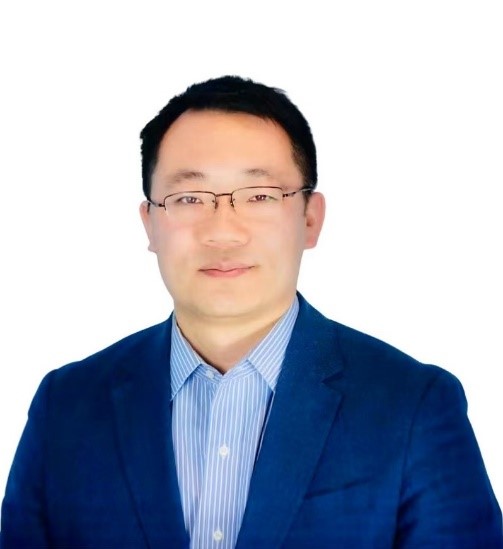EBM Interview: Xiaoyang Xu
Published 14 November, 2024
Dr. Xiaoyang Xu is a tenured professor in the Department of Chemistry and Materials Science at the New Jersey Institute of Technology (NJIT) and heads the Nanomedicine and Biomedical Materials Laboratory. He is also affiliated to the Department of Biomedical Engineering at NJIT. He earned his Ph.D. in Chemistry from Northwestern University under the mentorship of Professor Chad Mirkin, a world-renowned scientist in chemistry and nanomaterials. Dr. Xu later pursued postdoctoral research in nanomedicine and drug delivery with Professor Robert S. Langer at the Massachusetts Institute of Technology, a pioneer in tissue engineering and drug delivery.

XIAOYANG XU, Ph.D.
Professor
Newark College of Engineering
New Jersey Institute of Technology
Dr. Xu’s research focuses on the development of novel functional biomaterials, nucleic acid drug nanocarriers, targeted nanomedicines, and nano-diagnostic agents, with applications in drug delivery, tissue engineering, gene therapy, and precision medicine. He has published over 60 SCI papers in journals such as Nature Communications, Science Advances, Bioactive Materials, JACS, PNAS, Angewandte Chemie, and ACS Nano, with more than 11,000 citations and has applied for several patents related to drug delivery systems. Dr. Xu's research team is committed to translating lab discoveries into clinical applications to enhance the prevention and treatment of cancer, cardiovascular diseases, and diabetes.
Here is the interview we did with him:
1. Could you briefly introduce your current research field?
My research centers on investigating the intersection of biomaterials and medicine, aiming to tackle core challenges at the crossroads of these fields through the application of chemistry, materials science, and engineering techniques. A primary objective is to create multifunctional polymeric and lipid nanoparticles for various medical uses, such as therapeutic delivery and regenerative medicine, with a particular emphasis on developing nanoparticles for the delivery of nucleic acids like siRNA and mRNA. Additionally, a key focus of our work is on the synthesis of biomaterials and the advancement of processing techniques to produce hydrogels and scaffolds that are both degradable and biocompatible, intended for drug delivery and tissue engineering applications.
2. What obstacles or difficulties have you encountered in your research work? How did you overcome these difficulties?
Since our primary research focuses on the development of medical materials and drug delivery systems, a significant challenge we encounter is accurately identifying the true needs of patients. Understanding these needs is crucial to ensure that our innovations are both relevant and effective. To tackle this issue, it is essential for us to engage in direct consultations with healthcare professionals, including doctors and clinicians. By collaborating closely with them, we gain valuable insights into the real-world clinical challenges and patient requirements that our research should address. This dialogue helps us align our research objectives with practical, unmet needs, ultimately enhancing the impact and applicability of our medical solutions.
3. What attracted you to join the BAM editorial Board team?
Bioactive Materials is a leading journal in materials science and biomedical engineering, renowned for its contributions to advancing knowledge and innovation. I was drawn to it due to its reputation for publishing cutting-edge research that bridges fundamental science with practical applications. The journal’s focus on bioactive materials, which are crucial for biomedical applications like drug delivery, tissue engineering, and regenerative medicine, aligns perfectly with my research interests. Its commitment to high-quality, peer-reviewed articles and the presence of renowned scientists as chief editors, making it a valuable resource for staying at the forefront of advancements in my field.
4. What are your expectations for the future development of Bioactive Materials and its promotion of related fields?
Bioactive Materials has made significant progress in recent years and has become one of the leading scientific journals in the field of biomaterials. In the near future, I expect it to strengthen its reputation as a top-tier journal. With its focus on interdisciplinary approaches and groundbreaking discoveries, the journal is likely to attract more high-quality submissions, further enhancing its leadership in the biomaterials community.
5. What is your greatest hobby outside of scientific work?
My hobbies outside of research are traveling with family and cooking good food. I enjoy exploring new places and experimenting with different recipes in the kitchen.
6. How do you balance scientific research work and personal life?
I find it crucial to balance scientific research work with personal life. To do so, I make it a point to allocate time specifically for my family, focusing on being present with my kids and engaging in meaningful family activities. This approach pushes me to be more efficient and focused during work hours, allowing me to fully enjoy quality time with loved ones. Maintaining this balance not only supports my well-being but also keeps me productive and motivated in both my personal and professional endeavors.
7. What do you think is the most important quality for researchers?
I believe the most important qualities for researchers are a genuine passion for their research interests, a willingness to brainstorm creative ideas, and persistence. Research interests drive curiosity and motivation. Brainstorming and persistence help overcome challenges and lead to meaningful discoveries.
8. What advice do you have for young scholars who are determined to engage in scientific research?
Although I still consider myself a young scholar, I am happy to share some advice with others starting out. First, find joy in your research and let curiosity drive you. Second, strive to maintain a balance between your professional work and family life. Lastly, be patient, as growth and success in academia take time and persistence.

